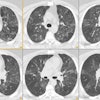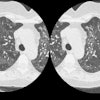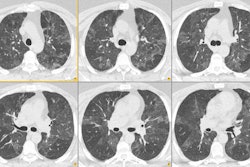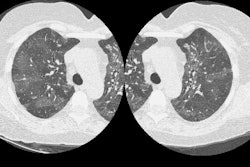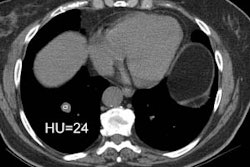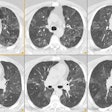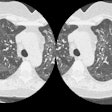Radiology 2001 Sep;220(3):803-9
Peripheral lung adenocarcinoma: correlation of thin-section CT findings with
histologic prognostic factors and survival.
Aoki T, Tomoda Y, Watanabe H, Nakata H, Kasai T, Hashimoto H, Kodate M, Osaki T,
Yasumoto K.
PURPOSE: To evaluate the prognostic importance of thin-section computed
tomographic (CT) findings of peripheral lung adenocarcinomas. MATERIALS AND
METHODS: The subjects were 127 patients with adenocarcinomas smaller than 3 cm
in largest diameter who underwent at least a lobectomy with hilar and
mediastinal lymphadenectomy. The margin characteristics of nodules and the
extent of ground-glass opacity (GGO) within the nodules at preoperative
thin-section CT were analyzed retrospectively. Regional lymph node metastasis (LNM)
and vessel invasion (VI) were histologically examined in surgical specimens.
Survival curves were calculated according to the Kaplan-Meier method. RESULTS:
The frequencies of LNM (4% [1 of 24]) and VI (13% [three of 24]) in
adenocarcinomas with GGO components of more than 50% were significantly lower
than those with GGO components of less than 10% (LNM, P <.05; VI, P <.01).
The patients with GGO components of more than 50% showed a significantly better
prognosis than those with GGO components less than 50% (P <.05). All 17
adenocarcinomas smaller than 2 cm with GGO components of more than 50% were free
of LNM and VI, and all these patients are alive without recurrence. Coarse
spiculation and thickening of bronchovascular bundles around the tumors were
observed more frequently in tumors with LNM or VI than in those without LNM or
VI (P <.01). CONCLUSION: Thin-section CT findings of peripheral lung
adenocarcinomas correlate well with histologic prognostic factors.
